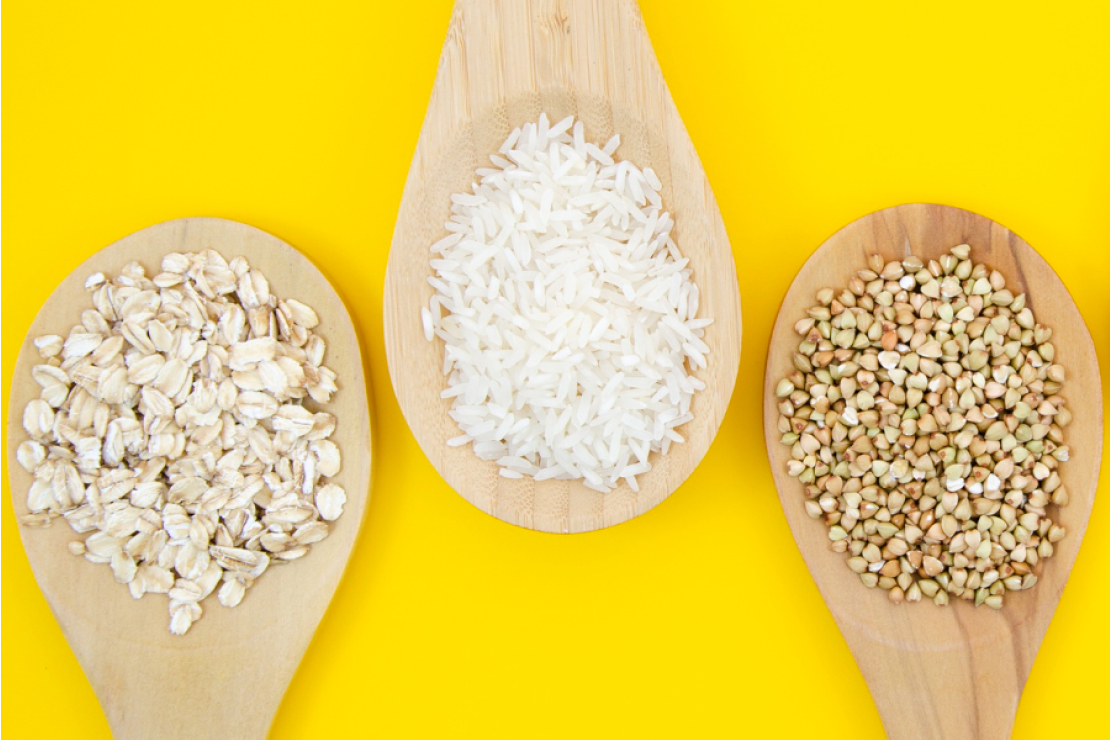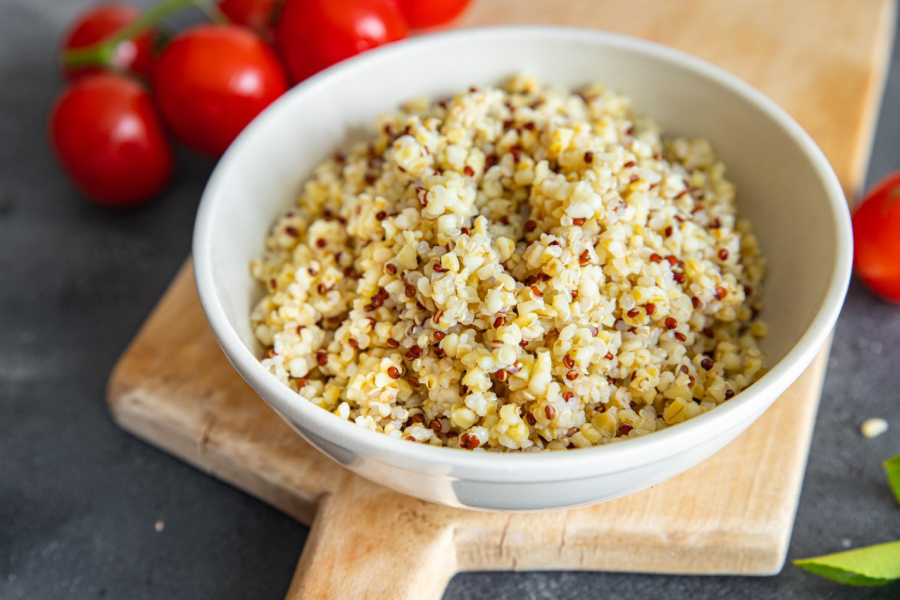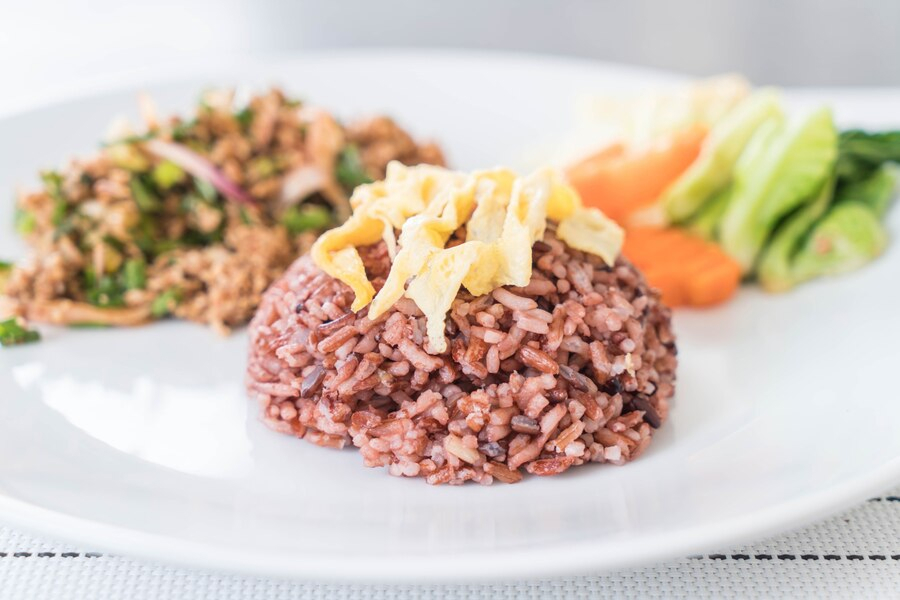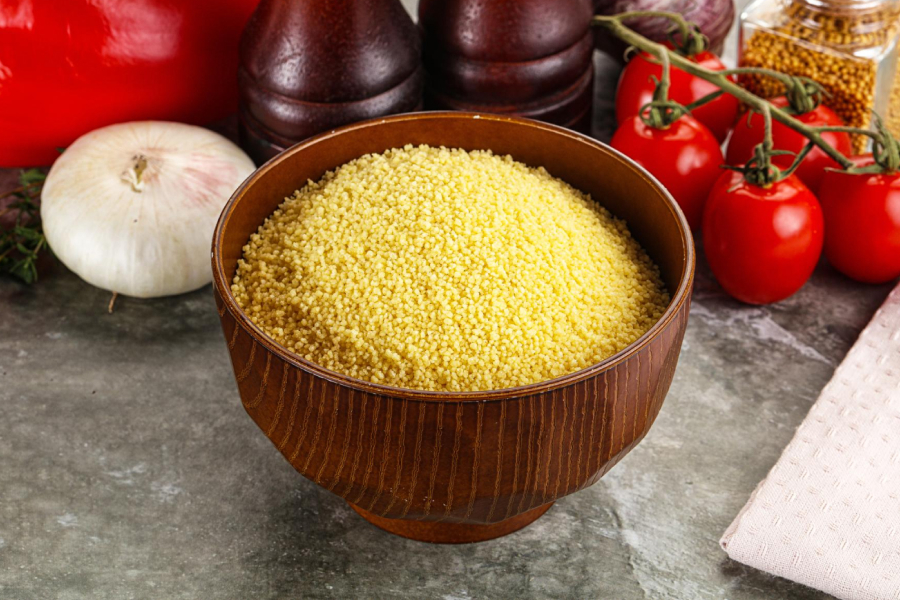Quinoa vs Rice vs Couscous: Which Grain Supports Weight Loss Best?
Discover which grain is best for your weight loss journey. Compare quinoa, rice, and couscous nutrition, benefits, and how each affects your weight loss goals with expert insights and AI tracking tips.

Table of Content
Introduction
In the quest for weight loss, choosing the right carbohydrates can make a significant difference in your success. Among the most popular options, quinoa, rice, and couscous each offer unique nutritional profiles and benefits. But which one truly stands out for weight loss?
This comprehensive comparison is designed for health-conscious individuals looking to make informed decisions about their grain choices. Whether you're actively pursuing weight loss goals or simply aiming to eat healthier, understanding these options will help you make better dietary choices.
We'll examine three popular grain options - quinoa, brown rice, and couscous - comparing their nutritional profiles, weight loss benefits, and practical considerations to help you choose the best option for your needs.
Comparison Overview
| Nutrient (per 100g cooked) | Quinoa | Brown Rice | Couscous |
|---|---|---|---|
| Calories | 120 kcal | 111 kcal | 112 kcal |
| Protein | 4.4g | 2.6g | 3.8g |
| Carbohydrates | 21.3g | 23.0g | 23.0g |
| Fiber | 2.8g | 1.8g | 1.4g |
| Glycemic Index | 53 (Low) | 68 (Medium) | 65 (Medium) |
| Essential Minerals | High | Moderate | Low |
Evaluation Criteria
- Nutritional Value: Protein content, fiber levels, and essential nutrients
- Weight Loss Support: Impact on satiety and blood sugar control
- Versatility: Ease of cooking and recipe adaptability
- Cost-Effectiveness: Budget considerations and availability
- Preparation Time: Convenience for busy lifestyles
Quinoa: The Superfood Carb

Overview
Quinoa has earned its reputation as a superfood, particularly for those focused on weight loss. This ancient grain (technically a seed) offers several unique advantages that set it apart from traditional grains. Originally cultivated by the Incas in South America, quinoa has become increasingly popular worldwide due to its exceptional nutritional profile and versatility in cooking.
Key Features
- Complete protein profile with all 9 essential amino acids
- High fiber content (2.8g per 100g)
- Low glycemic index (53)
- Rich in essential minerals (iron, magnesium, zinc)
| Pros | Cons |
|---|---|
|
|
Use Cases
Pre and Post-Workout Nutrition
Quinoa's complete protein profile and complex carbs make it ideal for workout nutrition, supporting both muscle recovery and energy needs.
- Mix with lean protein for enhanced recovery
- Add vegetables for extra nutrients
- Consider portion size based on workout intensity
Plant-Based Protein Source
Perfect for vegetarians and vegans looking to meet their protein needs while maintaining a balanced diet.
- Combine with legumes for increased protein
- Use in buddha bowls and salads
- Great replacement for meat in many dishes
Weight Loss Meal Planning
High protein and fiber content help with satiety and blood sugar control, making it excellent for weight management.
- Control portions to 1/2 cup cooked
- Pair with high-volume vegetables
- Use as a base for meal prep
Verdict
The nutritional powerhouse among the three, quinoa is ideal for those prioritizing protein intake and nutritional density in their weight loss journey.
Brown Rice: The Familiar Classic

Overview
Brown rice remains a staple in many healthy diets, offering a reliable and affordable source of complex carbohydrates. Unlike its white counterpart, brown rice retains its bran and germ layers, which house most of the grain's nutritional value.
Key Features
- Complex carbohydrate structure
- Moderate fiber content (1.8g per 100g)
- Medium glycemic index (68)
- Good source of manganese
| Pros | Cons |
|---|---|
|
|
Use Cases
Budget-Friendly Meal Preparation
Perfect for bulk cooking and meal planning on a budget, brown rice offers good nutrition at a lower cost.
- Cook in large batches and freeze portions
- Use rice cooker for consistent results
- Store properly to maintain freshness
Asian-Inspired Healthy Dishes
Ideal base for stir-fries and Asian cuisine, providing sustained energy with authentic taste.
- Rinse before cooking for better texture
- Let it rest after cooking
- Perfect for leftover transformations
Everyday Staple Meals
Reliable and versatile option for regular meals, especially when serving diverse dietary preferences.
- Keep portions to 1/3 cup cooked
- Mix with other grains
- Use as a base for grain bowls
Verdict
Brown rice is the most practical choice for those balancing nutrition with budget, offering solid nutritional benefits at an accessible price point.
Couscous: The Lightweight Option

Overview
Couscous is not a grain but a form of pasta made from semolina wheat. This unique preparation method results in a light, fluffy texture that can be particularly satisfying in meals while maintaining portion control.
Key Features
- Quick cooking time (5 minutes)
- Light and fluffy texture
- Moderate protein content (3.8g per 100g)
- Good source of B vitamins
| Pros | Cons |
|---|---|
|
|
Use Cases
Quick Weekday Lunches
Perfect for busy professionals who need quick, satisfying meals without lengthy preparation.
- Prepare in advance and reheat
- Add pre-cooked proteins
- Mix with roasted vegetables
Mediterranean Diet Integration
Authentic addition to Mediterranean-style meals, offering traditional flavors and cooking versatility.
- Use herbs and olive oil for authenticity
- Serve with grilled vegetables
- Perfect for cold and warm salads
Portion-Controlled Side Dishes
Excellent for those wanting precise portion control due to its light, fluffy nature and easy measuring.
- Use standard measuring cups
- Fluff with a fork before serving
- Add herbs for extra flavor without calories
Verdict
Couscous is best suited for those prioritizing convenience and quick preparation, though it offers less nutritional benefits compared to quinoa and brown rice.
Summary
Who Should Choose What?
- Choose Quinoa if: You prioritize protein content and nutritional density, and budget isn't a primary concern.
- Choose Brown Rice if: You're looking for a budget-friendly option that still provides good nutritional value.
- Choose Couscous if: Quick preparation is your priority and you're comfortable with a more refined grain option.
| Category | Best Option | Why? |
|---|---|---|
| Protein Content | Quinoa | Complete amino acid profile with highest protein content (4.4g/100g) |
| Budget-Friendly | Brown Rice | Most economical while maintaining excellent nutritional value |
| Quick Preparation | Couscous | Ready in just 5 minutes, perfect for busy schedules |
| Blood Sugar Control | Quinoa | Lowest glycemic index (53) and steady energy release |
| Bulk Cooking | Brown Rice | Superior shelf life and maintains texture when stored |
| Versatility | Quinoa | Excellent in hot dishes, cold salads, and as a protein substitute |
| Portion Control | Couscous | Light, fluffy texture makes portion management easier |
Conclusion
While all three options can be part of a healthy weight loss diet, quinoa emerges as the nutritional winner due to its superior protein content, fiber levels, and complete amino acid profile. However, the best choice for you depends on your personal circumstances and priorities.
Remember that successful weight loss isn't just about choosing the "best" grain, but rather about maintaining proper portion control, combining grains with other healthy foods, and consistent tracking. Consider using AI-powered tracking tools to optimize your portions and timing for maximum results.
"The best grain for weight loss is the one you'll actually eat consistently as part of a balanced, calorie-controlled diet. Use tools like AI-powered tracking to optimize your portions and timing for maximum results."
Start Your Health Journey Today
Download Macro Tracking AI and take control of your nutrition with the power of artificial intelligence.
Download on App Store

